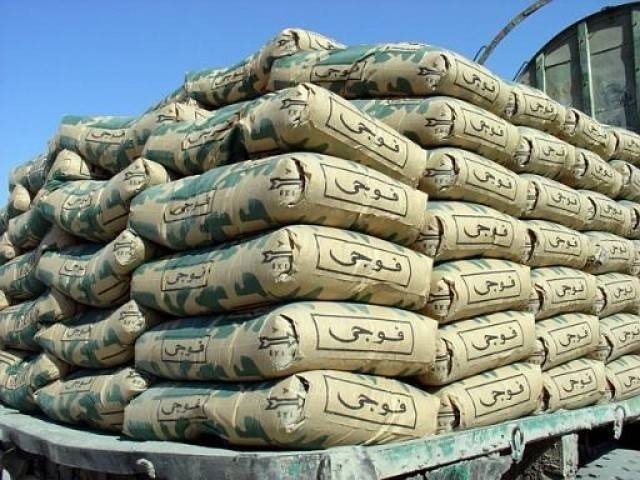ISLAMABAD: The Cement sector has reportedly implemented the track and trace after the directions of the Federal Board of Revenue.
The FBR had been striving to implement the T&T solution in the Cement Sector since July 1, 2022 with assistance from its Licensee Authentix Inc., US, and consortium partners AJCL Private Limited and MITAS Corporation of South Africa.
The Board has already been successful in implementing this system in the tobacco industry and is in process to make it fully applicable in the fertiliser industry as well.
Why is the T&T system needed?
Manufacturers often under-report their production numbers precisely to evade tax. This is where the problem starts. Say, for example, that you are a cement manufacturer and produce 500 bags of Urea. The demand for cement from your plant is 400 bags. Now, if there are 500 bags being produced that would mean the supply is increasing beyond demand which results in the price falling. The problem for the manufacturer is that the government will tax every single bag of Urea that is purchased. So instead of reporting these extra 100 bags, the producer will show that they are making an even 400 bags and sell the remaining 100 at a lower price free of tax.
Manufacturers underreport their production numbers. They then sell the unreported surplus production outside of the tax net at cheaper rates and the black market grows. This has resulted in startling estimates of just how big the shadow economy is in Pakistan with academics and researchers estimating the size of this undocumented economy anywhere between 40-80% of the country’s GDP.
Of course if you can under report for controlling price you are also more likely to under report to evade taxes. More often than not the under reporting is much more blatant than the aforementioned example and it doesn’t just exist in the cement industry.
What is the T&T system?
The T&T system proposes that tax collection be done directly at the source. That means the government monitors production and catalogue how much a company’s output is and then tax them directly on those numbers. So if we go back to our cement example, when the government first brings in a T&T system it will ask the cement industry to invest heavily in a mechanism that will have a stamp placed on each and every bag of cement produced which could then be scanned before it is sold.
The data from this scanning would go directly to the FBR which would then record the total number of bags produced and tax them accordingly. T&T solutions are used across the globe to assist in the process of tax collection.
Implementation and Impact
According to sources, numerous successful demonstrations were conducted in multiple factories to demonstrate the performance of the Track and Trace System However, there were delays on the part of the cement manufacturers.
The tax department reportedly has given the deadline to powerful cement manufacturers to implement the Track and Trace system from 18-Aug-2023. Almost 70% of the operational Cement plants are located in the North Region, while the remaining 30% capacity is located in the South Region.
According to All Pakistan Cement Manufacturers Association, Cement sector’s production capacity has surged to approximately 83.1 Million Tonnes.
Currently, there is 20% Customs duty, 6% additional Customs duty, Rs2/kg FED and 18% Sales tax on finished cement products besides 11% income tax which has been imposed on the cement manufacturers.
Generally, the Cement sector is organised and is oligopolistic in nature. With most of the players listed on the PSX, market capitalization of the sector was recorded around Rs 378 billion in March 2023.
In FY22, overall sector gross revenues grew by 24% and were recorded at Rs 671 bn. As per a study conducted by a local institute, the cement sector achieved a gross profit of Rs 72 billion in the first half of FY23, with a pre-tax profit of Rs 49.7 billion.
Meanwhile, Pakistan’s per capita cement consumption is around 215 kg whereas world average per capita consumption is recorded around 550 kg, more than double the consumption in Pakistan, reflecting an immense potential for growth in cement demand.
The International Monetary Fund in its last report also declared the roll-out of track-and-trace essential to secure the full benefit of recent taxation changes, notably FED on cigarettes.
In a recent report, a local NGO highlighted that the FBR’s Track and Trace system is yielding positive results. The digital solution has effectively limited illicit trade in the Tobacco sector to under 15% for the first time.
The Track and Trace System’s capability for real-time production monitoring offers a transformative shift from conventional retrospective auditing approaches.
The real-time production monitoring will enable the Tax Authorities to have access to current and comprehensive data which will facilitate proactive decision-making and ensure more accurate tax assessments. This centralised repository will provide Tax Authorities with unprecedented visibility into the sector’s production landscape.
The implementation of the Track and Trace System will not only encompass the Sector within the Track and Trace network but will also amplify revenue collection, thereby contributing to the national exchequer.

























The picture shown at the top is quite meaningful in current circumstances.
cement manufacturer and produce 500 bags of UREA……….Cement manufacturer producing urea????
store job